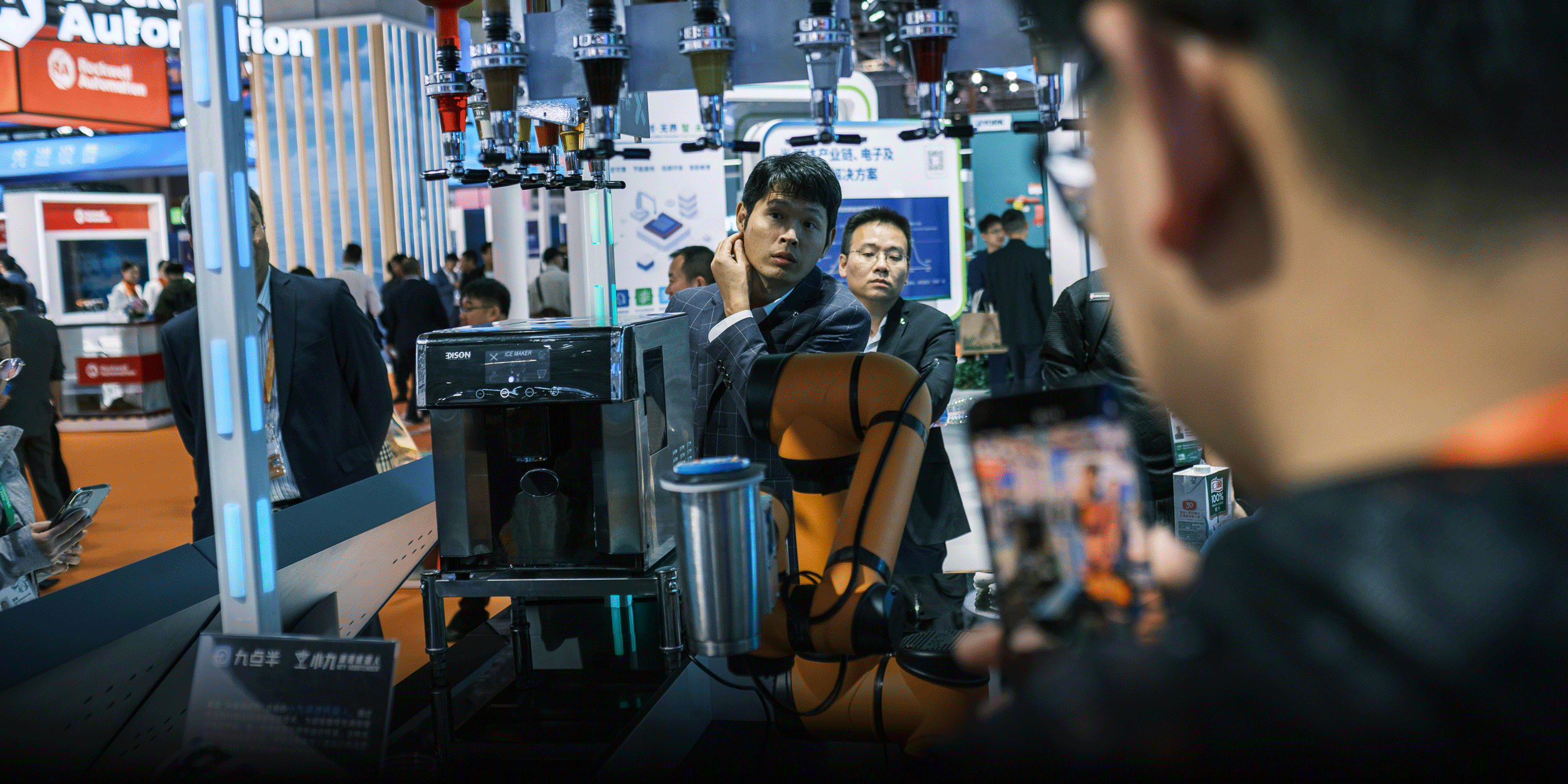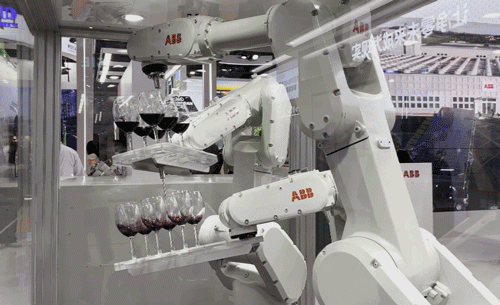
Meet the Robots That Run, Mix Drinks, and Play Table Tennis
From a mechanical bartender that can read customers’ moods to a humanoid robot that can sprint “blind” across complex terrain, the China International Import Expo (CIIE) in Shanghai brought robotics to life across sectors like health care, manufacturing, and consumer services.
At the seventh edition of the annual expo, robots showcased real-world capabilities to illustrate their potential to revolutionize daily life, reshape industries, and meet challenges ranging from medical precision to high-efficiency manufacturing.
Sixth Tone takes a closer look at some of the standout robots from this year’s CIIE.

Sprint and sense
Named after an iconic Chinese encyclopedia symbolizing vast knowledge, the “Tiangong” humanoid robot can sprint across complex terrain — even in blind-sight conditions.
Developed by the National and Local Co-built Embodied Artificial Intelligence Robotics Innovation Center, the humanoid robot debuted as “Tiangong 1.0 LITE” in April, becoming the world’s first full-size, purely electric-driven humanoid capable of running like a human.
“Tiangong is a girl,” said Ji Xiaohui, a technician at the center, noting that “she” stands 163 centimeters tall, weighs 43 kilograms, and can run at 6 kilometers per hour using precise motion control algorithms for soft landings. Her five-fingered hands are dexterous enough to lift objects weighing up to 3 kilograms.
This past August, an upgraded version was released, boosting its speed to 9.5 kilometers per hour and integrating a big data system for enhanced human interaction.
According to Ji, Tiangong’s capabilities make it suitable for rescue missions in fire zones and high-altitude power grid inspections, reducing human risk in hazardous tasks.

Glass ballet
Swiss industrial giant ABB showcased its advanced robotics capabilities through the “wine glass challenge” at the expo.
The demonstration featured three robotic arms precisely navigating paths between tightly spaced wine glasses at varying speeds, all without a single touch or break. Controlled by a single CPU, the arms maintained an accuracy margin of less than 0.6 millimeters while running continuously for 24 hours.
Yang Hao, sales manager of ABB’s industrial robotics unit in China, explained that this challenge was inspired by the “Fanta can challenge” from 50 years ago, when a similarly advanced robot for the time debuted with more widely spaced targets. Today, the robot’s precision serves practical uses, such as in electronics assembly, aligning smartphone cases or inserting batteries with exacting accuracy.

Mood mixer
Returning to the CIIE for the seventh year, German automation company Siemens wowed attendees with a bartender robot that whips up drinks tailored to customers’ moods.
Using facial recognition and AI, the robot analyzes a user’s emotional state and generates a customized drink menu. Once a choice is made, the robotic mixologist crafts the perfect beverage within minutes.
Sixth Tone observed one visitor allow the robot to scan his face, which was recognized as “happy.” Within moments, a menu with multiple drink options appeared. After the visitor made his selection, the robot got to work, preparing the customized drink in under 10 minutes, from scan to sip.
Powered by Siemens’ Workflow Canvas, a toolkit designed for seamless operational technology (OT) and information technology (IT), the robot showcases flexible machine collaboration.
“For example, when small and medium-sized enterprises want to transform or set up a new production line, costs can be very high,” Deng Yaxing, a Siemens software engineer, told Sixth Tone. “But with Workflow Canvas, it’s as simple as building blocks; you can drag and drop to assemble the entire production line. This makes devices, like robotic arms, smarter.”

Steady hand
Hong Kong-based Yuanhua Robotics unveiled China’s first orthopedic surgical robot to pass the National Medical Products Administration’s (NMPA) Special Review of Innovative Medical Devices. Designed to assist in critical hip and knee surgeries, the robot will enhance outcomes for aging populations facing joint degeneration.
Its mechanical arm helps surgeons achieve cleaner incisions when cutting bones, Li Yue, the company’s senior product manager, told Sixth Tone. The company also showcased a rehabilitation sensor that tracks patients’ movement data, helping doctors monitor post-surgery recovery progress.

Paddle perfect
Japan’s Omron Corporation introduced its latest iteration of FORPHEUS, a table tennis coach robot designed to mimic human arm movements with remarkable precision.
Equipped with advanced visual sensors, it tracks the ping pong ball in real time and assesses the player’s skill level. By tailoring its returns to match the player’s abilities, FORPHEUS helps users gradually refine their game, blending cutting-edge AI with a truly interactive training experience.
(Header image: The Siemens automated bartender robot in action at the 7th China International Import Expo (CIIE) in Shanghai, Nov. 6, 2024. Wu Huiyuan/Sixth Tone)










